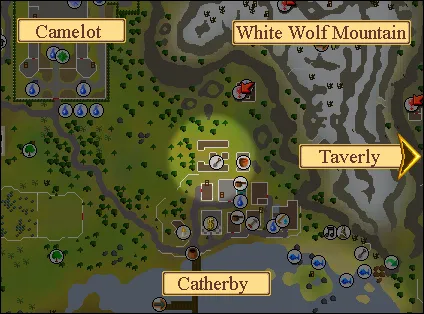Your cart is empty
Marigold Grow Time OSRS Ultimate Guide

In Old School RuneScape (OSRS), marigolds are a valuable flower for players looking to level up their Farming skill or protect their crops. Whether you’re a low-level player or an Ironman, understanding marigold grow time, requirements, and uses can make your farming runs more efficient. This guide dives into everything you need to know about growing marigolds in OSRS, including grow time, farming tips, and practical applications.
Marigolds are flowers grown in flower patches using the Farming skill in OSRS. They’re popular for their low-level requirement and utility in protecting certain crops from disease. With a grow time of just 17.5 minutes, marigolds are a quick and efficient crop for early-game farmers.
Key Uses of Marigolds
- Crop Protection: Fully grown marigolds protect potato, onion, and tomato allotments from disease when planted in a nearby flower patch.
- Quest Requirements: Marigolds are needed for the Garden of Tranquillity quest to obtain delphinium seeds.
- Compost: Harvested marigolds can be added to compost bins to create regular compost.
- Imp Repellent: Marigolds can be used to craft imp repellent, though this is less common.
- Hammerstone Hops: One marigold serves as a protection payment for growing hammerstone hops.
Marigold Grow Time and Farming Requirements

Marigolds take 17.5 minutes to fully grow in OSRS, making them one of the fastest-growing flowers in the game. Below are the essential requirements and steps to grow marigolds effectively.
Farming Level and Tools Needed
To plant marigold seeds, you need:
- Level 2 Farming: Accessible to nearly all players, even fresh accounts.
- Marigold Seed: Obtainable from Draynor Seed Market (2 coins), pickpocketing Master Farmers (level 38 Thieving), or stealing from seed stalls (level 27 Thieving).
- Seed Dibber: Used to plant the seed.
- Rake: To weed the patch before planting.
- Watering Can (Optional): To water the patch, reducing disease risk.
- Compost (Recommended): Compost, supercompost, or ultracompost boosts yield and lowers disease chance.
Growth Stages and Timing
Marigolds progress through four growth stages, each lasting approximately 5 minutes, with a total grow time of 17.5 minutes. The stages are:
| Stage | Duration | Description |
|---|---|---|
| Stage 1 | 0–5 minutes | Seed planted, small sprout appears. |
| Stage 2 | 5–10 minutes | Sprout grows taller. |
| Stage 3 | 10–15 minutes | Plant develops leaves and buds. |
| Stage 4 | 15–17.5 minutes | Fully grown marigold, ready to harvest. |
Note: Marigolds have a chance to become diseased every 5 minutes. Using compost or supercompost reduces this risk, and plant cure or the Lunar spell Cure Plant can restore diseased plants.
Where to Plant Marigolds

Marigolds are planted in flower patches, which are distinct from allotment or herb patches. There are five flower patches in OSRS, accessible to members:
- Falador: South of Falador, near Draynor Village. Easily reached via Draynor lodestone or Explorer’s Ring 3.
- Port Phasmatys: West of the city. Best accessed with an Ectophial or Canifis lodestone.
- Catherby: Near the beach. Accessible via Catherby lodestone or Camelot teleport.
- Ardougne: North of East Ardougne. Reached via Ardougne lodestone or teleport.
- Manor Farm: North of Ardougne. Accessible via Ardougne lodestone.
Tip: Free-to-play players can only use the Falador patch, limiting their farming efficiency.
Best Patches for Efficiency
For optimal farming runs, prioritize patches based on teleport accessibility:
- Catherby and Manor Farm: Close to lodestones and commonly used in allotment runs.
- Falador: Convenient for non-members or with Explorer’s Ring.
- Ardougne: Pair with nearby allotment patches for multi-crop runs.
- Port Phasmatys: Skip unless you have an Ectophial, as it’s time-consuming to reach.
Tips for Growing Marigolds Efficiently
Maximizing your marigold yield and minimizing losses requires strategy. Here are some proven tips to enhance your farming runs.
Use Compost or Supercompost
Applying compost before planting reduces disease risk and increases yield. Supercompost is ideal for low-level players, as it’s affordable and significantly boosts success rates. Ultracompost is overkill for marigolds due to its high cost.
Monitor Disease Risk
Marigolds can become diseased every 5 minutes. To mitigate this:
- Water Regularly: Use a watering can during growth stages to lower disease chance.
- Plant Cure: Purchase from nearby farmers for 25 coins to cure diseased plants.
- Lunar Spell: If you have access to Cure Plant, use it to save seeds.
- Greenfingers Aura: Activate to reduce disease risk during quests like Garden of Tranquillity.
Combine with Allotment Runs
Since marigolds protect potatoes, onions, and tomatoes, plant them alongside these crops in nearby allotment patches. This not only saves time but also maximizes experience and crop yield. A sample run could look like:
- Plant marigolds in the flower patch.
- Plant potatoes or onions in adjacent allotment patches.
- Return after 17.5–40 minutes to harvest both.
Source Seeds Efficiently
Marigold seeds are cheap and easy to obtain:
- Draynor Seed Market: Buy for 2 coins each from Olivia.
- Thieving: Steal from seed stalls (level 27 Thieving) or pickpocket Master Farmers (level 38 Thieving).
- Amelia’s Seed Shop: Located in the Farming Guild, an alternative for members.
Pro Tip: Stock up on seeds via Thieving for Ironman accounts to avoid Grand Exchange dependency.
Marigolds in Quests and Profitability
Beyond farming, marigolds play a role in quests and can be profitable for low-level players.
Garden of Tranquillity Quest
In the Garden of Tranquillity quest, you must grow marigolds for Elstan at the Falador flower patch to obtain delphinium seeds. Key steps include:
- Wear the Ring of Charos (a) and use charm options when speaking to Elstan.
- Plant a marigold seed in the flower patch after agreeing to grow marigolds (seeds planted before the dialogue won’t count).
- Wait 17.5 minutes, harvest, and trade for delphinium seeds.
Tip: Use compost and water the patch to ensure the marigolds survive, as disease can delay quest progress.
Profit Potential
Marigolds can be a decent money-maker for low-level players due to their demand in summoning (bull ant pouches) and farming. According to the OSRS Wiki, marigold seeds cost around 2 coins, while harvested marigolds sell for approximately 3,224 coins on the Grand Exchange. Key profit factors:
- Low Cost: Seeds are cheap, and tools are reusable.
- Quick Growth: 17.5 minutes allows multiple runs per hour.
- Experience: Planting yields 8.5 XP, and harvesting gives 47 XP, totaling 55.5 XP per marigold.
Note: Profits are lower for free-to-play players, as they’re limited to one patch. Members can farm up to four patches for higher returns.
Challenges and Considerations
While marigolds are beginner-friendly, there are challenges:
- Disease Risk: Without compost or watering, marigolds may die, wasting time and seeds.
- Limited Yield: Each patch yields only one marigold, unlike limpwurt roots (3 per harvest).
- Competition: Other flowers like nasturtiums may be preferred for different protections.
To overcome these, always use compost, water diligently, and plan your runs to include multiple patches.
Marigolds are a fantastic starting point for OSRS players diving into Farming. With a grow time of just 17.5 minutes, low-level requirements, and versatile uses, they’re perfect for leveling up, protecting crops, or earning a small profit. By following the tips in this guide—using compost, combining with allotment runs, and sourcing seeds efficiently—you’ll master marigold farming in no time. Happy farming, and may your patches stay disease-free!
